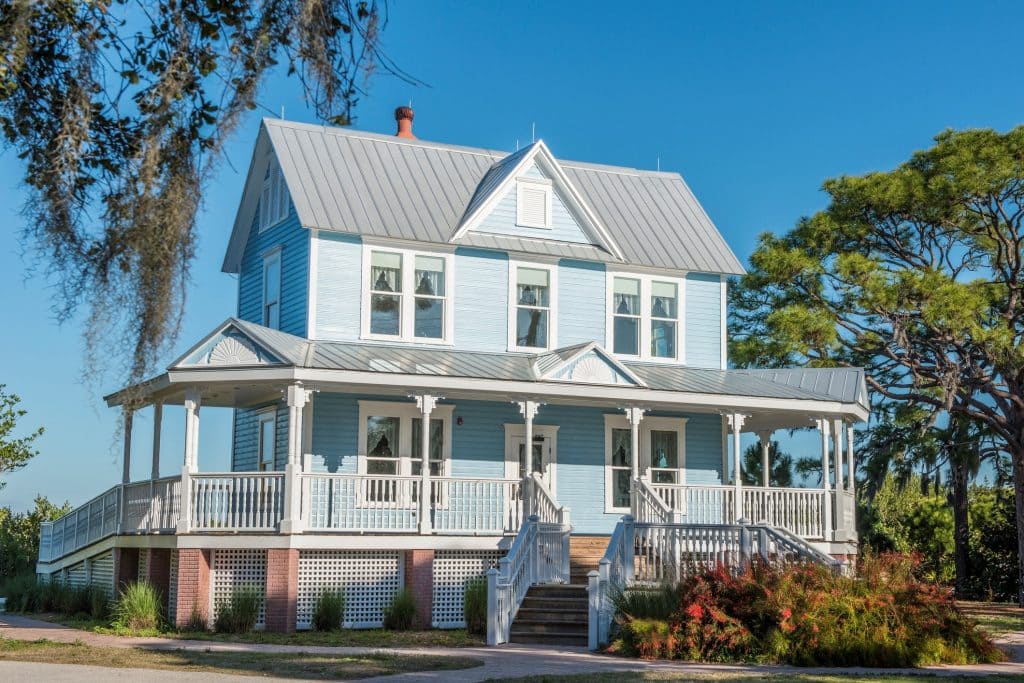Introduction
In the quest for energy efficiency and cost savings, homeowners are constantly seeking ways to reduce their energy bills. One effective yet often overlooked solution is installing a white metal roof. This article explores the benefits of a white metal roof in terms of energy savings, provides insights into how it works, and offers practical advice for homeowners considering this option.
The Science Behind White Metal Roofs
Reflective Properties
A white metal roof is designed to reflect sunlight rather than absorb it. The primary benefit of this reflective property is its ability to reduce the heat absorbed by your home. Traditional dark-colored roofs absorb more heat, increasing the internal temperature of your home and, consequently, your air conditioning costs. A white metal roof, on the other hand, reflects a significant portion of solar radiation, helping to keep indoor temperatures lower.
Cool Roof Standards
White metal roofs often meet or exceed “cool roof” standards set by organizations like the Cool Roof Rating Council (CRRC). These standards ensure that the roofing material has high reflectance and thermal emittance. Reflectance measures how much sunlight is reflected, while thermal emittance indicates how effectively the material releases absorbed heat. A high reflectance and thermal emittance value means that the white metal roof will significantly lower cooling costs.
Financial Benefits of White Metal Roofs
Reduced Cooling Costs
One of the most immediate financial benefits of a white metal roof is the reduction in cooling costs. By reflecting sunlight and reducing heat absorption, a white metal roof can lower the temperature inside your home, reducing the need for air conditioning. Studies have shown that a white metal roof can cut cooling costs by up to 20%, depending on your location and the existing insulation in your home.
Longevity and Maintenance
White metal roofs are also known for their durability and low maintenance requirements. Unlike traditional asphalt shingles, metal roofs have a longer lifespan, often lasting 50 years or more. This longevity means fewer replacements and repairs, which translates into additional cost savings over time. Additionally, metal roofs are resistant to various weather conditions, reducing the likelihood of damage that could lead to costly repairs.
Energy Efficiency Incentives
Many regions offer incentives for homeowners who choose energy-efficient roofing options. Installing a white metal roof can make you eligible for various rebates, tax credits, and other financial incentives designed to promote energy efficiency. Check with local government agencies or energy providers to see what programs are available in your area.
Practical Considerations
Installation Costs
While the long-term savings of a white metal roof are significant, the initial installation cost can be higher compared to traditional roofing materials. However, this upfront investment is often offset by the reduced energy bills and lower maintenance costs over the roof’s lifespan. It’s essential to get multiple quotes and compare the total cost of ownership to determine if a white metal roof fits within your budget.
Aesthetic Appeal
A white metal roof offers a sleek and modern look that can enhance the curb appeal of your home. Additionally, the reflective nature of the roof can make your home stand out in the neighborhood. However, it’s important to consider how the roof’s appearance will fit with the overall aesthetic of your home and local architectural styles.
Conclusion
In summary, a white metal roof provides significant financial benefits through reduced cooling costs, longevity, and maintenance savings. By reflecting sunlight and reducing heat absorption, this roofing option can lower your energy bills and contribute to a more comfortable living environment. While the initial investment may be higher, the long-term savings and potential for energy efficiency incentives make a white metal roof a compelling choice for homeowners looking to save money and improve their home’s energy performance.
Tables
Table 1: Comparison of Energy Costs with Different Roof Types
| Roof Type | Average Cooling Cost Reduction | Lifespan (Years) | Maintenance Costs |
|---|---|---|---|
| White Metal Roof | Up to 20% | 50+ | Low |
| Dark Asphalt Roof | Minimal | 20-30 | Medium |
| Clay Tile Roof | Moderate | 50+ | Low |
Q&A
Q: How much can I expect to save on my energy bills with a white metal roof?
A: On average, a white metal roof can reduce cooling costs by up to 20%. The exact savings will depend on factors such as your location, the size of your home, and the efficiency of your existing insulation.
Q: Are there any incentives available for installing a white metal roof?
A: Yes, many regions offer rebates, tax credits, and other financial incentives for energy-efficient home improvements, including white metal roofs. Check with local government agencies or energy providers for details.
Q: How does a white metal roof compare to other energy-efficient roofing options?
A: White metal roofs are highly effective at reducing cooling costs due to their reflective properties. They often outperform other roofing materials in terms of longevity and low maintenance costs, making them a cost-effective choice in the long run.
References
- Cool Roof Rating Council. (n.d.). Cool Roof Rating Council
- U.S. Department of Energy. (n.d.). Energy Efficiency and Renewable Energy
- Metal Roofing Alliance. (n.d.). Benefits of Metal Roofing

